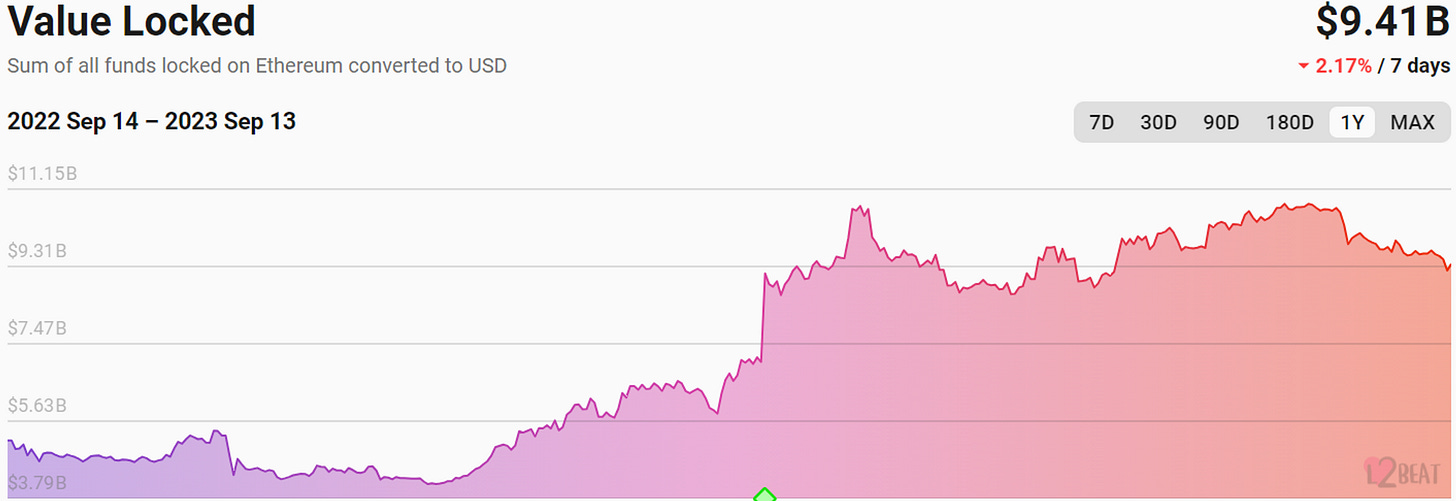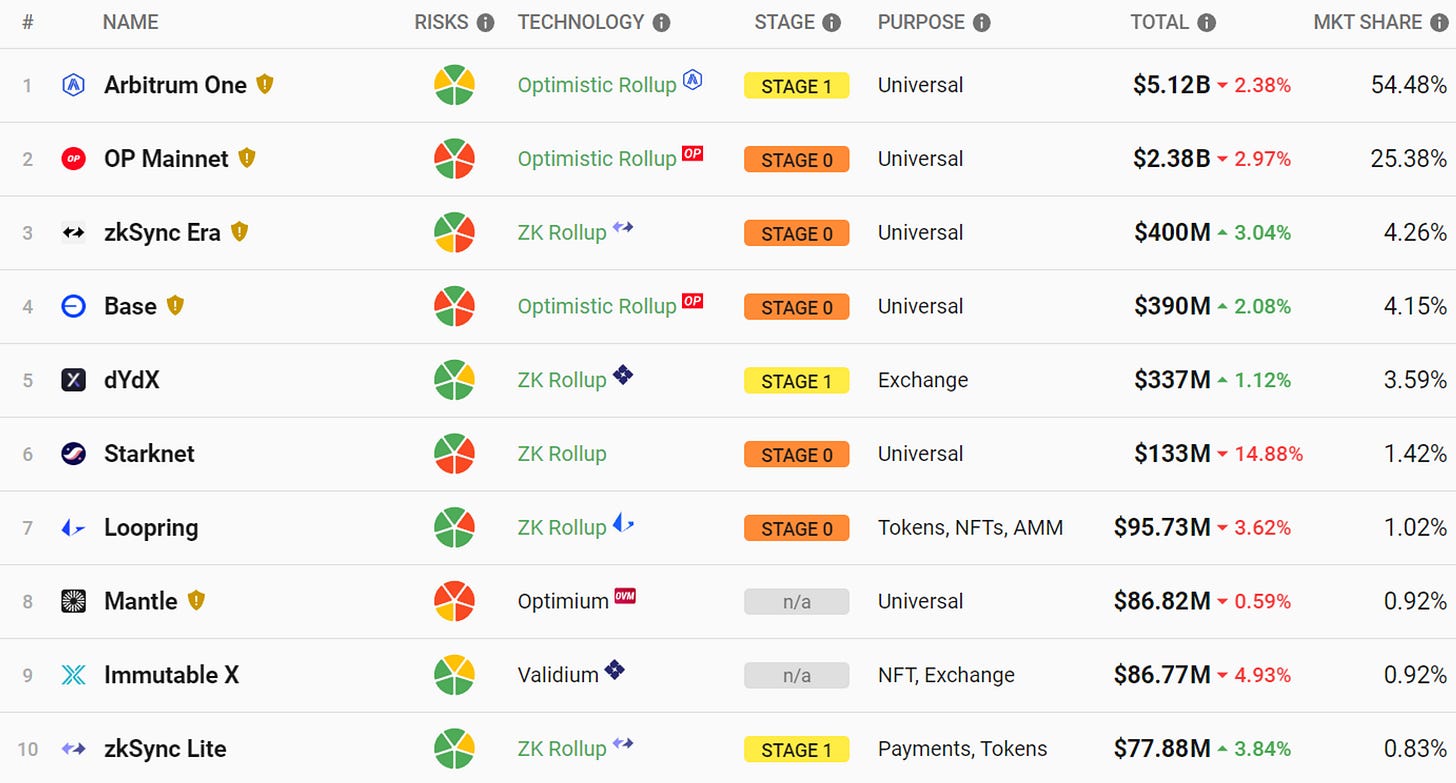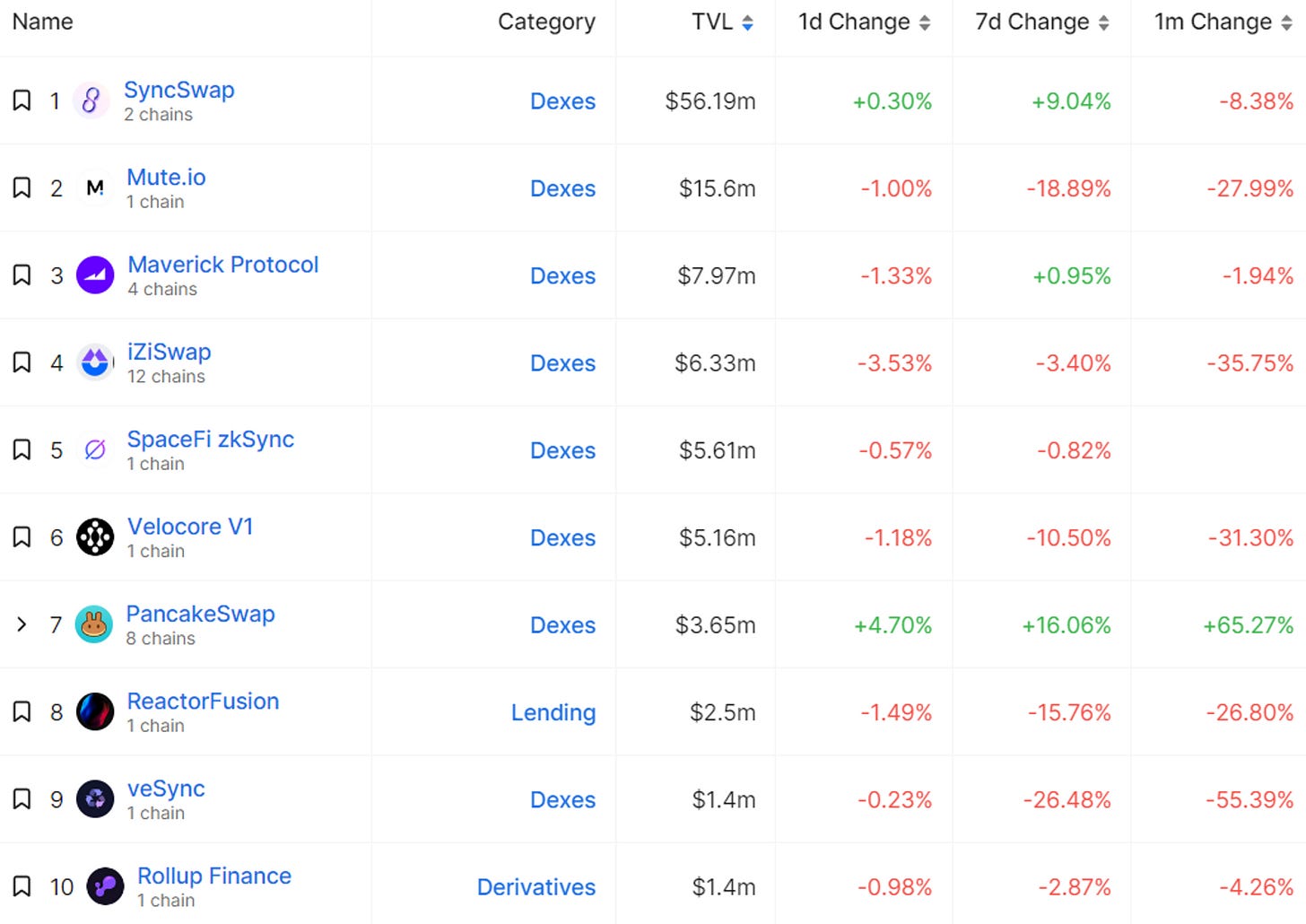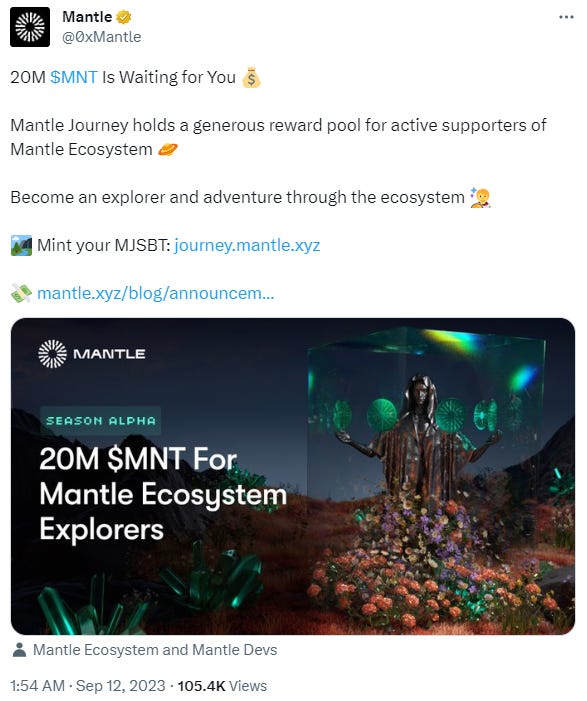The Optimism Collective’s RetroPGF Learning Journey | Layer 2 Review
Quick Reads and Hot Links Covering the People and Projects Who Are Scaling Ethereum
Dear Frens,
There’s no doubt about it — the Layer 2 ecosystem is thriving. With the equivalent of more than nine billion USDC locked in, it’s clear we’re not just here to play around. That said, there’s plenty of fun to be had, with Onchain Summer having inspired many creative campaigns and NFT mints to keep the growth vibes strong.
The slightly more serious and totally legit form of playing around is the ethos of continual improvement. The Optimism Collective, through an iterative approach to its Retroactive Public Goods Funding model, epitomises the traditional ‘plan, do, check, act’ cycle, but brings a spirit of hope through the focus on “producing a virtuous cycle of impact driven expansion”. In this issue’s editorial, read more about what was learned in Rounds 1 and 2 and what’s in store for RetroPGF 3.
Newly unearthed alien beings aside, it’s been a wild couple of weeks in crypto with the news that Vitalik Buterin temporarily lost control of his X account, and that it’s possible to mistakenly pay 20 BTC for a single transaction fee on Bitcoin, but never mind all that! Read on to get up to speed on the Layer 2 happenings and remember we’ll be back in two weeks for another Layer 2 Review.
Contributors: Warrior, jengajojo, thinkDecade, trewkat, HiroKennelly
This is an official newsletter of BanklessDAO. To unsubscribe, edit your settings.
✅ Action Items
🏃♀️ Banish Permissionless FOMO by watching Onchain is the New Online with Jesse Pollak, David Hoffman, and Ben Jones.
🔔 Sign up for the Optimism’s RetroPGF Newsletter to be notified about project registration.
🔥 Hot News
Celo has announced the launch of MiniPay by Opera (the web browser). MiniPay is a new stablecoin wallet built on Celo to onboard millions of mobile users across Africa to web3!
Celo’s Rene Reinsberg said that Celo’s desire to reduce the friction of stablecoin transfers combined with Opera Mini’s high usage across Africa make this non-custodial wallet an easy way for people to send payments and access dApps using their Android phone.
According to the Celo blog, “MiniPay’s rollout begins in Nigeria, expanding to Kenya, Ghana, South Africa, and the entire continent in the coming months”.
🏛 Governance
💬 Proposals in Discussion
Arbitrum
This proposal suggests introducing a staking contract that responsibly distributes the allotted 1.75% annual inflation of the total ARB supply to users who are willing to lock their ARB.
The Arbitrum DAO is entitled to mint up to 2% of the total supply of ARB as inflation per year and use this in any manner they see fit. However, because the mint function is not yet available, the authors propose using an equivalent amount of funds from the Arbitrum DAO treasury along with a mechanism for distributing it among ARB lockers. The funds used from the treasury would be replenished through minting on March 15, 2024 when the annual mint function becomes available.
Mantle
Smart bug bounty programs are a win-win for everyone. This proposal aims to create an incentives pool on Hats Protocol for hackers/auditors to help protect the Mantle smart contracts. The goal of the vault is to incentivize responsible vulnerability disclosure for Mantle. Liquidity can be added permissionlessly (with $MNT and/or yield-bearing tokens) and LPs will be rewarded with $HAT tokens once the liquidity mining program is launched.
⚡ On Snapshot
This proposal outlines a one-time, community-created program to distribute up to 75,000,000 ARB of DAO-funded incentives targeting active Arbitrum protocols.
🪂 Airdrop Station
📈 Data
Total Value Locked on L2s

Top Ten Projects by Total Value Locked:

🔭 Project Watch
Arbitrum
Top Projects by TVL in the Last 7 Days

What Protocols Are Users Flocking To?

Optimism
Top Projects by TVL in the Last 7 Days

Top Projects by User Accounts in the Last 7 Days
zkSync Era
Top Projects by TVL in the Last 7 Days

zkEVM
Top Projects by TVL in the Last 7 Days

The Optimism Collective’s RetroPGF Learning Journey
Author: sandeepdas

If you are an ardent follower of Optimism Foundation's commitment to Retroactive Public Goods Funding, you are probably already aware that Round 3 — known as RetroPGF 3 — was announced in June 2023. Regardless, read on to learn more about the process, in particular the attention given to ensuring each RetroPGF round builds on the learning from the last.
Adhering to its principle of continuous and iterative governance improvement, the Foundation has constantly evolved the dynamics and process of Retroactive Public Goods Funding through Rounds 1 to 3. This principle is nicely summed up by the Optimism Foundation:
RetroPGF will run frequently and continuously until it becomes the driving funding mechanism behind the entire Optimism Collective economy. This is an iterative process. Each round is an opportunity to observe, learn, and iterate based on the successes and shortcomings of the previous round.
The popularity of the RetroPGF rounds have increased round by round, with some really impactful numbers to showcase:
RetroPGF 1
76 projects nominated
58 projects received funding
Median funding received: $14,670
Funding received by Top 10% of projects: $36,919
RetroPGF 2
195 projects nominated
195 projects received funding
Median funding received: 22,825 OP
Funding received by Top 10% of projects: 140,000 OP
As the popularity of RetroPGF rounds has increased, so has the number of badgeholders — the OP token holders who are selected to vote for funding distribution in each round. For RetroPGF Round 1 there were 24 badgeholders, Round 2 saw 71 participate, and in Round 3 voting badges will be offered to 208 community members. With the growth of each round, there has been a corresponding expansion in expectations about the scrutiny, expertise, and experience that badgeholders will bring to the assessment of each project’s merit.
While RetroPGF as a concept is still in its infancy, there is no doubt that the program itself has merit. Vitalik Buterin wrote a detailed but positive review of RetroPGF 1, which summarized the round as a success, but suggested some improvements such as increasing the diversity of badgeholders.
Following RetroPGF 2, the Optimism Foundation analyzed and published its own detailed report: RetroPGF2: Learnings & Reflections. Some of the interesting findings include:
There was little difference in grants to projects categorized as "high impact" vs. those categorized as "moderate impact" (similar to Round 1).
Token allocation spread was much larger in Round 2 than Round 1. In the first round, 58 out of 76 nominated projects received votes, while in the second, all of the nominated 195 projects received votes.
The types of funded Round 2 projects spread across multiple domains, including infrastructure and education, and projects were also operating in multiple regions and languages. This was an improvement over Round 1, where all 58 projects that received votes for funding were technology projects.
Although RetroPGF 2 extended the positive impact to a larger and more diverse array of projects, it did create significant challenges. These challenges revolved around the nomination process, and the information requested from / provided by project teams — ultimately there was not enough context for badgeholders to make effective decisions from the data collected.
Implementing its principle of continuous learning, the Foundation has introduced enhancements in how RetroPGF-3 will be run, from both the project nomination and evaluation perspectives. A summary of the improvements include:
Key success criteria for each project nomination category. The idea is to help align badgeholders while still leaving room for interpretation, discussion, and more granular definition.
Structured project applications to gather better data, and a better voting UX through a custom-built voting application.
A process for community-sourced recommendations and curation to allow badgeholders to incorporate the research and expertise of the community.
As a start, the categorization of projects at the time of nomination has been made sharper and the intent of RetroPGF-3 has been communicated clearly:
RetroPGF-3 will allocate 30m OP tokens to reward contributions that have supported the development and adoption of Optimism.
Projects can be nominated under four categories, reproduced here from the Optimism documentation:
OP Stack: Work that enhanced the efficiency, security, resilience, and awareness of the OP Stack.
Collective Governance: Work that provided impact to governance participants of the Optimism Collective, or helped bring new governance participants into the Collective.
Developer Ecosystem: Work that provided impact to application developers in the Optimism Collective, or helped bring new developers into the Collective.
End User Experience & Adoption: Work that provided impact to end users in the Optimism Collective, or helped bring new end users into the Collective.

To enhance the voting process and reduce manual data entry for badgeholders, the Foundation opened up a baseline grant amount of 150,000 OP to invite developers who can meet the following strategic objectives:
Objective 1: Building a frontend that powers the discovery of projects and voting by badgeholders in RetroPGF 3. The frontend will utilize the Ethereum Attestation Service, and a combination of onchain and offchain sources (storage bucket, IPFS, etc.) to read data.
Objective 2: Hosting and managing the application infrastructure, including backend infrastructure needed to capture and store badgeholder votes.
With voting for RetroPGF 3 scheduled to begin later in 2023, look out for the proposed enhancements to project description / information (through the new Project Signup Form), clearer voting guidelines (which will be shared with OP badgeholders nearer to voting time), and a significantly improved voting UX.
As the Optimism Foundation continues its significant work on Retroactive Public Goods Funding, we can expect the evolution and enhancements to continue from RetroPGF 3 to RetroPGF 4 and so on. This will benefit the whole public goods funding ecosystem, drawing inspiration from the Foundation’s approach to strengthening coverage, recognition, and impact.
🔥 L2 Fees and Costs Update
Transaction Fees as of September 12, 2023:

Security Costs as of September 12, 2023:

🗞️ Ecosystem Updates
⛓️ Layer 2 Demystified: How Polygon Scales Ethereum.
🆕 Astar Network Launches Astar zkEVM Powered by Polygon's CDK.
🔵 Base Ecosystem Fund Announces First Six Investments.
➿ Base Joins the Tokenized Asset Coalition.
⚡ Polyhedra Network Announces Integration and Strategic Partnership With Taiko.
⭕ Socket Incentive Rush Results in $150M Liquidity Bridged to Optimism.
🔮 Track All Your Bridge Transactions in One Place With Socket Explorer.
📈 Blockframe Joins the ZK Core Development Team
🧰 Onchain Is the New Online — Jesse Pollak, David Hoffman, and Ben Jones.
🏁 Transitioning zkSync's Ecosystem Management to DappRadar.








